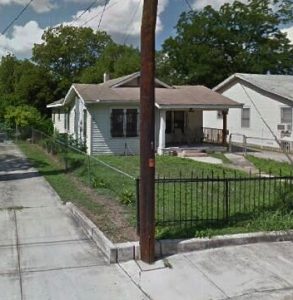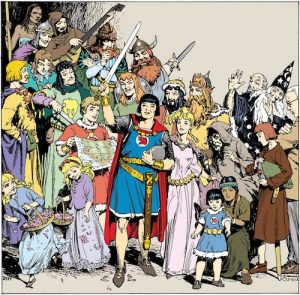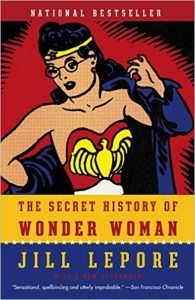 It was another lazy summer afternoon on the south side of San Antonio, Texas, probably 1951. My brother and I were huddled on the cement steps of our small house on Yellowstone Street, waiting for the paperboy to ride down our one-block street and deliver the afternoon paper. Why? We were anxious to read the next installment of our favorite comic strips.
It was another lazy summer afternoon on the south side of San Antonio, Texas, probably 1951. My brother and I were huddled on the cement steps of our small house on Yellowstone Street, waiting for the paperboy to ride down our one-block street and deliver the afternoon paper. Why? We were anxious to read the next installment of our favorite comic strips.
For me, it was Prince Valiant, an amazing hero who had death defying adventures, part of King Arthur’s court. I found his blue-black bobbed hair and striking features alluring, his feats fascinating. His Sunday comics in full color were even more wonderful—with complete episodes.
 But of equal interest were the exploits of Dick Tracy, detective, and others who fought against crime, like Super Man. The vivid graphics of each strip were stimulating, bigger than life.
But of equal interest were the exploits of Dick Tracy, detective, and others who fought against crime, like Super Man. The vivid graphics of each strip were stimulating, bigger than life.
It was worth our wait in the fierce heat, anticipation heightened by the sound of a bicycle bell. We observed the wobbly bike approach, as each rolled paper was thrown, house-by-house, ever nearer to our dried lawn of crab grass.
A newfangled television set was an unheard of luxury for most of us in our lower class, south side neighborhood. In our minds, newspaper comics arriving by bicycle everyday were just too good to be true—an awesome event.
Little did we know that these very comics were helping us develop literacy skills and build our reading comprehension. We were “reading between the lines,” making inferences, using graphic clues to interpret emotional reactions.
No matter that the newsprint smeared our fingers and elbows, that the newspaper became lining for our garbage cans. We had tasted a world of imagination, courage, and intrigue, far, far away—only to wait for the next day’s installment.
(Note: This is a recent photo of our house from a real estate site. When we lived there, the front porch was screened and there were no bars on the windows or fences along the front yard. The simple cement steps and path are the same.)




